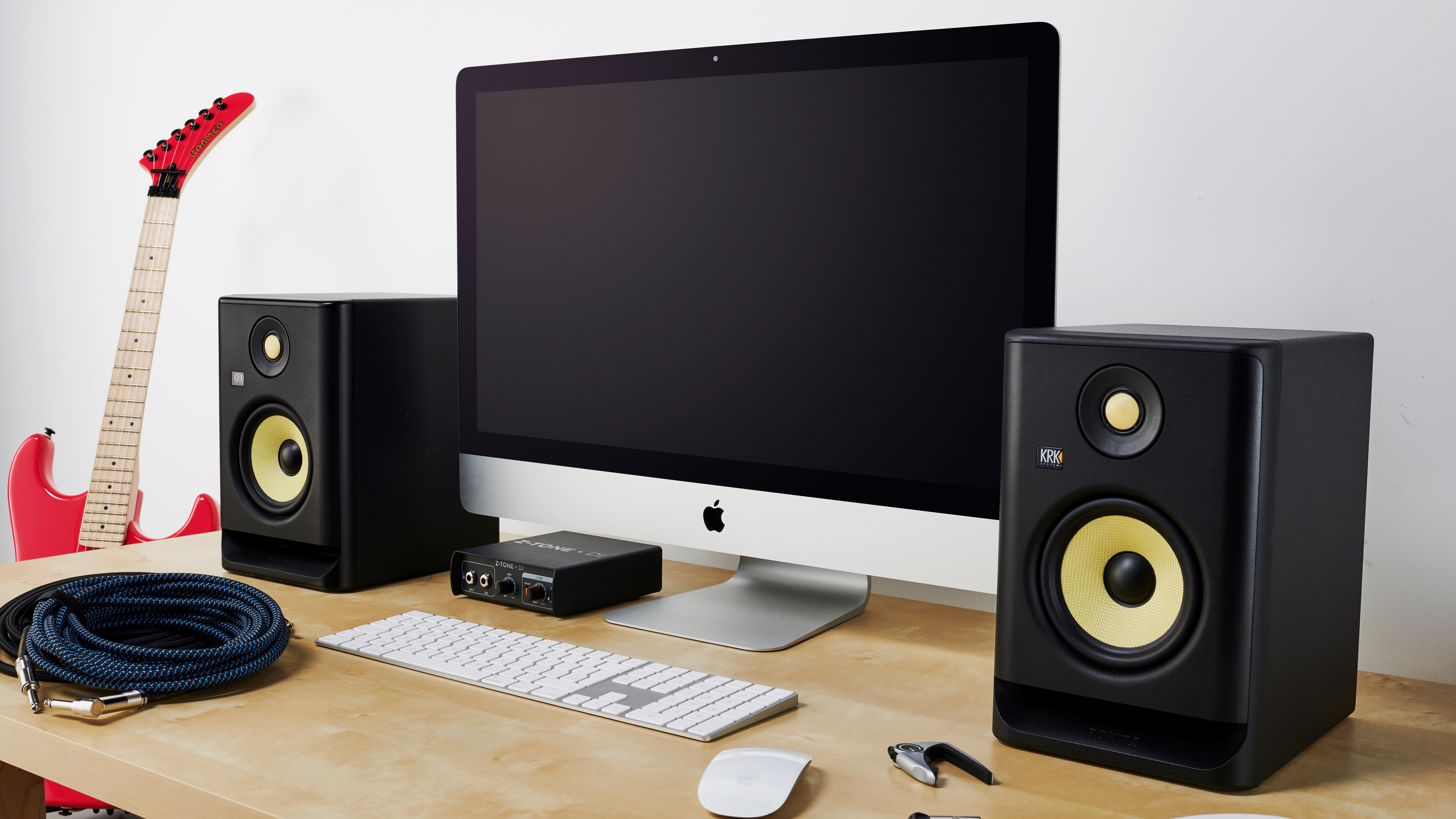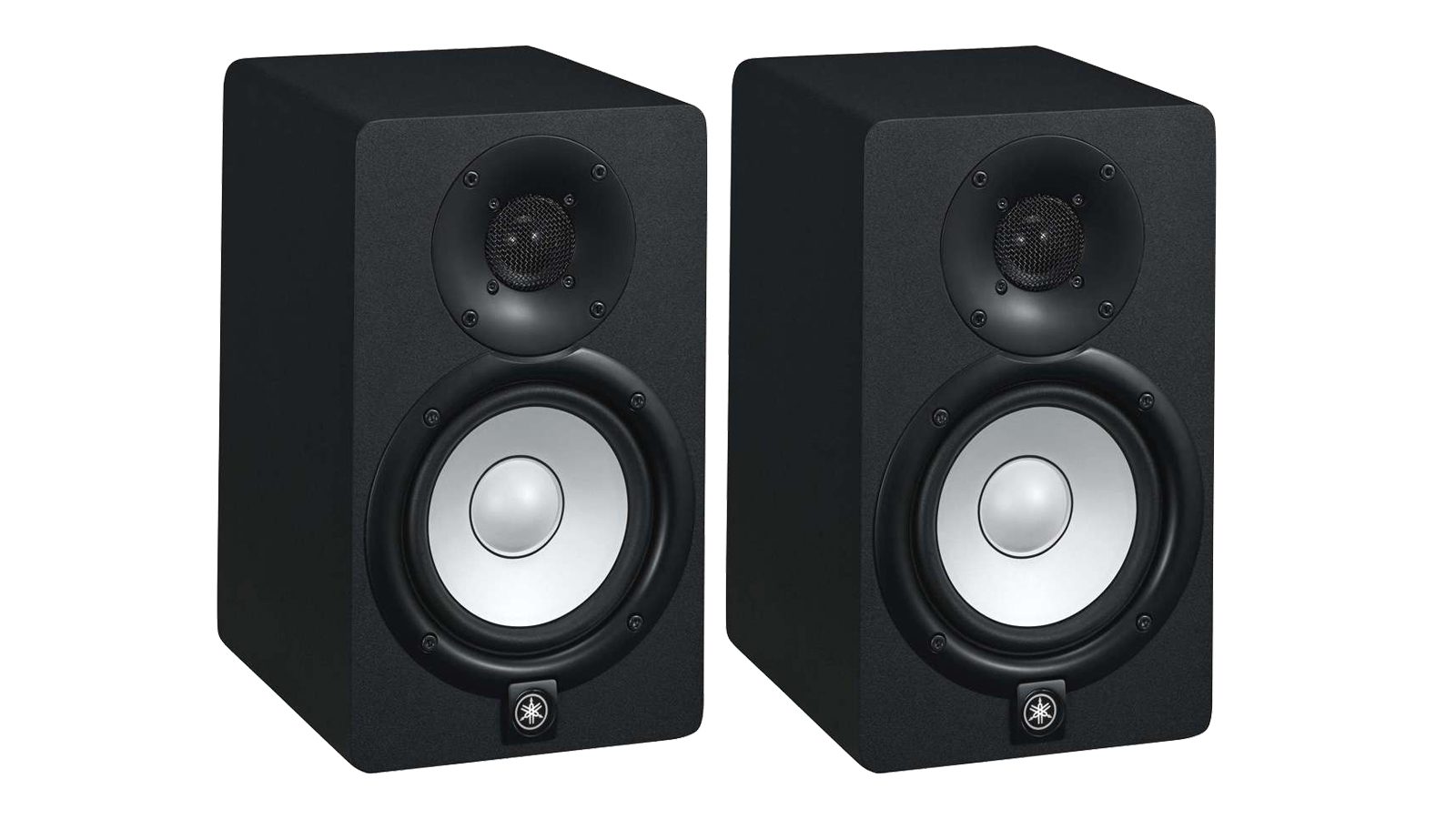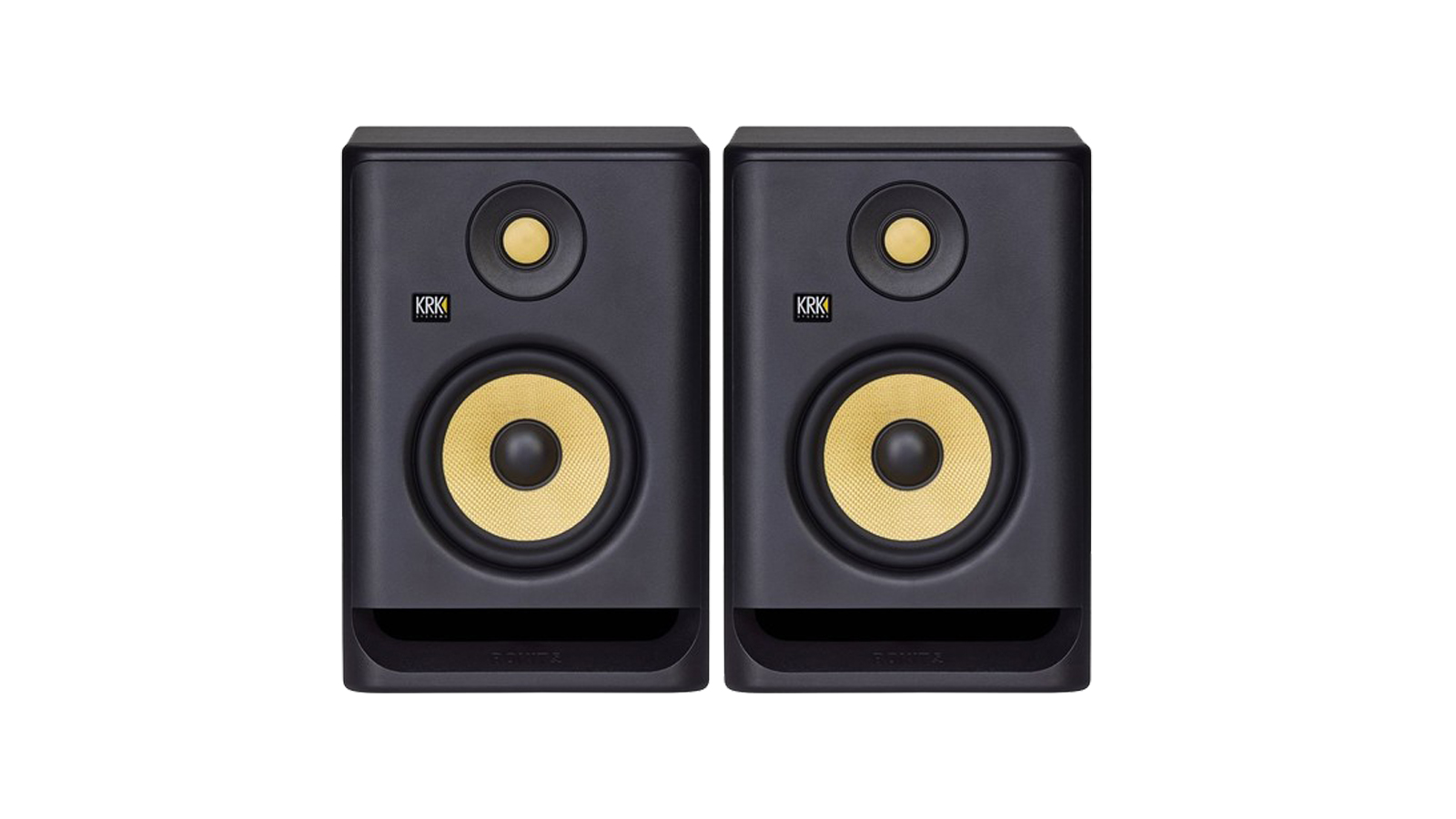MusicRadar Verdict
The KRK Rokit RP5 G4's are a killer pair of budget studio monitors for anyone with a slightly healthier looking budget. KRK, with one of the most highly reputable names in studio monitors, offers decent power and a sophisticated EQ response from the smallest Rokit edition. Mixing in your bedroom or a small studio? The RP5 G4's should be on your shortlist.
Pros
- +
Great joined up sound
- +
On board DSP and app help you get an honest response
- +
Some lovely extra 'pro' features
Cons
- -
Volume control around the back
- -
You will need to consider a bigger Rokit G4 if you are producing in larger rooms
MusicRadar's got your back
KRK Rokit RP5 G4 review: What is it?
There are some great options on the budget studio monitor speaker market with lots of big name manufacturers vying for your (not so much) cash. KRK has the pedigree, and the Rokit RP5 G4 monitors reviewed here are one of the best options, thanks to some of the design elements and features of the company's more pro end models being packed into their diminutive form (they even feature in our guide to the best small studio monitors).
The KRK Rokit RP5 G4 (also known as the Rocket 5 G4) is the smallest in KRK's Rokit G4 family. Three other larger studio monitors (the Rokit 7 G4, 8 G4 and 10 G4) feature bigger drivers, the size of which is indicated by the name in inches. With that logic we get a 5-inch Kevlar woofer on the Rokit 5 G4, matched with a 1-inch tweeter in its bi-amped design. Kevlar is often used in driver designs as it is a stiff material, helping to instantly translate the transients of your music.
Unusually for a speaker of this price, you get an on-board DSP feature EQ with 25 different settings to help you match the speakers to your room. They are active speakers too – no external amps required – with class D amps delivering 35 and 20 watts to the bass and high frequency drivers respectively. That's enough to power small to medium set-ups. If you are mixing in a larger space, the bigger Rokit G4s deliver a power output from 145 to 300 watts, enough for much bigger studios.
The on-board DSP processing can be accessed around the back, alongside balanced TRS/XLR combination jack inputs, a Volume rotary and Power button. We do prefer the volume control at the front of our speakers – especially when using the monitors just for general music listening – but when mixing you can, of course, also control the output level by way of your DAW.
We do like the padding at the base of each speaker though; this will cut down vibrations and lessen the need for any other acoustic isolation. The driver cabinets also feel very rigid, which will also help cut down vibration. A front firing port completes this anti distortion hat trick, also helping to deliver extended and controlled bass frequencies.
KRK Rokit RP5 G4 review: Performance & verdict

Turning to how the speakers work in practice and they are very easy to set up - all standard stuff with the advantages of that combo input. However the on-board EQ DSP will be a new feature to most people and is one of the most intriguing aspects of the G4 series. You use the Volume rotary to access it with it indicating said volume at the top of the screen. Pressing the knob also accesses EQ and Settings options, the latter of which allows you to access standby on/off, screen contrast and brightness, and whether or not you want the logo at the front of each speaker to illuminate. Yes, obviously!

In the main EQ section you get high- and low-end frequency options and several settings within these. Honestly, these will take some experimenting with to give you the best and most honest sound from the speakers, but you have two ways to do this. Traditionally, you can find the ideal EQ setup by putting well known tracks and your own (well produced!) mixes through the speakers and adjust the EQ accordingly. But KRK also has a free app, KRK Audio Tools, that helps you calibrate EQ settings according to your room, among other options. Overall it's a nice extra to have and easier than wrestling with the dip switches found on more expensive speakers.
As to the sound, the matched drivers really do seem to offer an even sound across the board. There's a surprising amount of detail in the high frequencies compared to other models in the price range but it's the joined up picture that impresses us, something you don't often get unless you add a mid range driver (and the cost that comes with it). The only drawback we found was power. These will deliver the goods up to a good volume for smaller rooms, and there's very little distortion as they do that, but you will need a bigger Rokit to fill a bigger studio. Add a great overall breadth of sound by way of good soundstage and wide sweet spot and the KRK Rokit RP5 G4s are a fantastic buy for the money.
KRK Rokit RP5 G4 review: Hands-on demos
Tech Steve
KRK Music
KRK Rokit RP5 G4 review: Specifications
- Type: Bi-amp system (20W tweeter, 35W woofer)
- Frequency response: 43Hz – 40kHz
- Tweeter: 1" glass aramid tweeter
- Woofer: 5" Glass aramid woofer
- Connectivity: Combo input XLR, 6.3mm balanced jack
- Size: (H x W x D): 285 x 190 x 241mm
- Weight: 4.85KG
- Contact: KRK Music
Andy has been writing about music production and technology for 30 years having started out on Music Technology magazine back in 1992. He has edited the magazines Future Music, Keyboard Review, MusicTech and Computer Music, which he helped launch back in 1998. He owns way too many synthesizers.
"That's what it takes to make music that's gonna last forever": Olivia Rodrigo and Chappell Roan producer Daniel Nigro on crafting timeless tracks
“A fully playable electro-mechanical synth voice that tracks the pitch of your playing in real time”: Gamechanger Audio unveils the Motor Pedal – a real synth pedal with a “multi-modal gas pedal”
“It was the first rock monster that we'd created”: How an explosive 2001 switch-up revealed just how ferocious Muse could get













